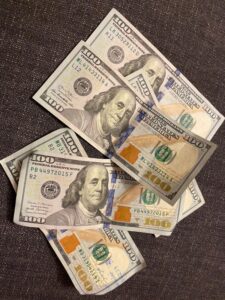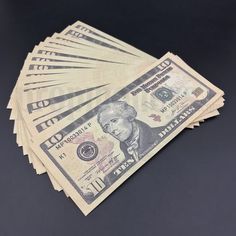Dollar Bills, simple pieces of paper that hold extraordinary influence in the lives of billions. From grocery stores to international trade agreements, the dollar bill represents more than just a means of exchange; it is a symbol of American power, trust, and history. Despite the rise of digital transactions and cryptocurrencies, dollar bills continue to play a vital role in everyday life. In this article, we’ll explore the origin, evolution, design, security features, and cultural impact of dollar bills in the United States and around the world.
The Origins of the Dollar Bill
The story of dollar bills begins in the late 18th century. Although the Continental Congress issued paper money called “Continentals” during the American Revolution, they were plagued by inflation and lack of trust. The official introduction of the U.S. dollar as a standard unit of currency came in 1792 with the Coinage Act, which established the U.S. Mint and the dollar as the country’s official monetary unit.
However, the dollar bill—as paper currency—didn’t emerge until the Civil War. In 1861, to finance the war, the U.S. Treasury issued the first paper dollars known as “Demand Notes,” which were followed by “United States Notes.” These were the earliest forms of dollar bills and marked a turning point in American economic history.

Evolution of the Dollar Bill
Over the decades, dollar bills have undergone numerous changes in design, material, and purpose. Initially printed in large denominations (like $500 or $1000), the focus gradually shifted to more common bills—like the $1, $5, $10, $20, $50, and $100 notes.
In 1929, the U.S. government standardized the size of dollar bills to the smaller dimensions we recognize today. This not only made currency easier to handle and store but also reduced printing costs. The design also became more unified, with distinct portraits of notable American figures and symbolic images on the reverse.
The Faces Behind the Bills
One of the most recognizable features of dollar bills is the faces of historical figures that adorn them. These portraits are carefully chosen based on legacy, contribution to the nation, and iconic status:
-
$1 Bill – George Washington, the first U.S. President
-
$5 Bill – Abraham Lincoln, the 16th President and a symbol of unity and freedom
-
$10 Bill – Alexander Hamilton, the first Secretary of the Treasury
-
$20 Bill – Andrew Jackson, the seventh President, though controversial for his policies toward Native Americans
-
$50 Bill – Ulysses S. Grant, a Civil War hero and 18th President
-
$100 Bill – Benjamin Franklin, Founding Father and prolific inventor and diplomat
These figures represent the values, struggles, and aspirations of a nation. Their presence on dollar bills is not only decorative but also educational.
Security Features of Modern Dollar Bills
Given the value of U.S. currency, dollar bills are a primary target for counterfeiters. In response, the U.S. Department of Treasury and the Bureau of Engraving and Printing have implemented advanced security features in modern banknotes.
Some of the most notable features include:
-
Color-shifting ink: The ink used in the numeral on the lower right corner of newer bills changes color when tilted.
-
Security threads: A thin embedded strip that glows under UV light and indicates the bill’s denomination.
-
Microprinting: Tiny text that’s difficult to replicate, visible only under magnification.
-
3D security ribbon (on the $100 bill): A blue ribbon woven into the bill, not just printed on the surface.
-
Watermarks: Faint images that can be seen when held up to the light.
These enhancements are essential in preserving the integrity of the U.S. dollar both domestically and globally.
The Dollar Bill in Global Context
The U.S. dollar is the world’s most widely used reserve currency, and dollar bills are accepted or exchanged in many countries. In some nations with unstable local currencies, U.S. dollar bills are preferred for savings and large transactions.
The sheer ubiquity of dollar bills makes them a cornerstone of global finance. Whether in foreign exchange markets, black market dealings, or travel-related transactions, the greenback maintains its reputation as a reliable and trustworthy medium of exchange.
Cultural Impact of Dollar Bills
Dollar bills are more than just money—they’re woven into the fabric of American culture. They symbolize success, ambition, capitalism, and even rebellion. From hip-hop lyrics and Hollywood films to political debates and artwork, dollar bills have left their mark.
Artists like Andy Warhol and contemporary street creators have incorporated dollar bills into their pieces to comment on wealth, inequality, and consumerism. Meanwhile, phrases like “money talks” and “make it rain” reflect the power people associate with these paper notes.
Moreover, the imagery on dollar bills—such as the Great Seal of the United States, the Eye of Providence, and the Latin phrase E Pluribus Unum—evokes a deep sense of national identity and symbolism.

The Future of Dollar Bills
With the rapid rise of mobile payments, digital wallets, and even cryptocurrencies, the future of physical currency is often questioned. However, dollar bills continue to persist due to their ease of use, anonymity, and broad acceptance.
The U.S. government remains committed to keeping paper money in circulation while continuously upgrading its security and functionality. Innovations like tactile features for the visually impaired are already being explored for future designs.
At the same time, digital dollar discussions are gaining traction, especially in light of global trends toward Central Bank Digital Currencies (CBDCs). While these digital alternatives may complement cash, dollar bills are unlikely to disappear anytime soon.
Collecting Dollar Bills: A Niche Hobby
Numismatics—the study and collection of currency—includes a passionate community of people who collect dollar bills. Rare misprints, historical designs, and older series with limited circulation can be worth hundreds or even thousands of dollars.
For example, a $1 silver certificate from the 1930s or a red-seal $2 United States Note can be prized items among collectors. Some enthusiasts even look for “fancy serial numbers” (like 00000001 or 12345678), adding another layer of interest to dollar bills beyond their face value.
Conclusion
Dollar bills may seem ordinary at first glance, but they carry with them layers of historical depth, cultural significance, and global impact. From the early days of the republic to modern high-tech banknotes, the evolution of the dollar bill mirrors the journey of the United States itself.
As technology continues to shape the way we handle money, dollar bills remain a tangible reminder of the nation’s past and its enduring values. Whether tucked into a wallet, passed across a counter, or featured in pop culture, the dollar bill is—and will likely remain—a powerful symbol of value, identity, and trust.
